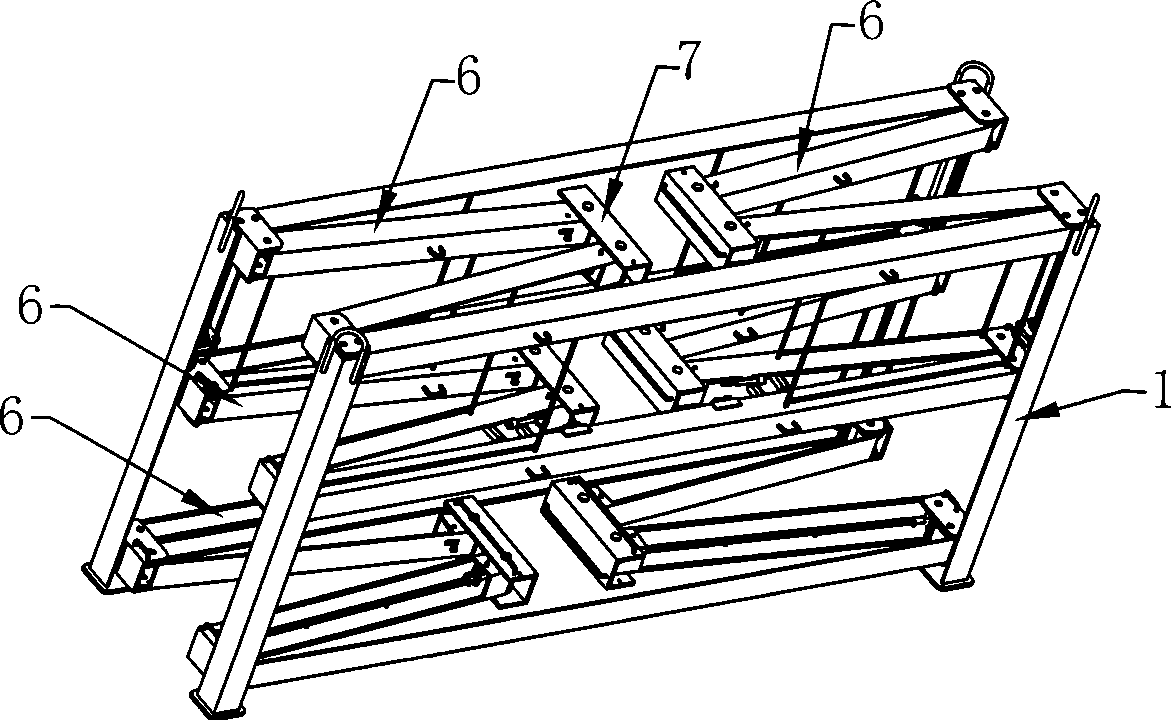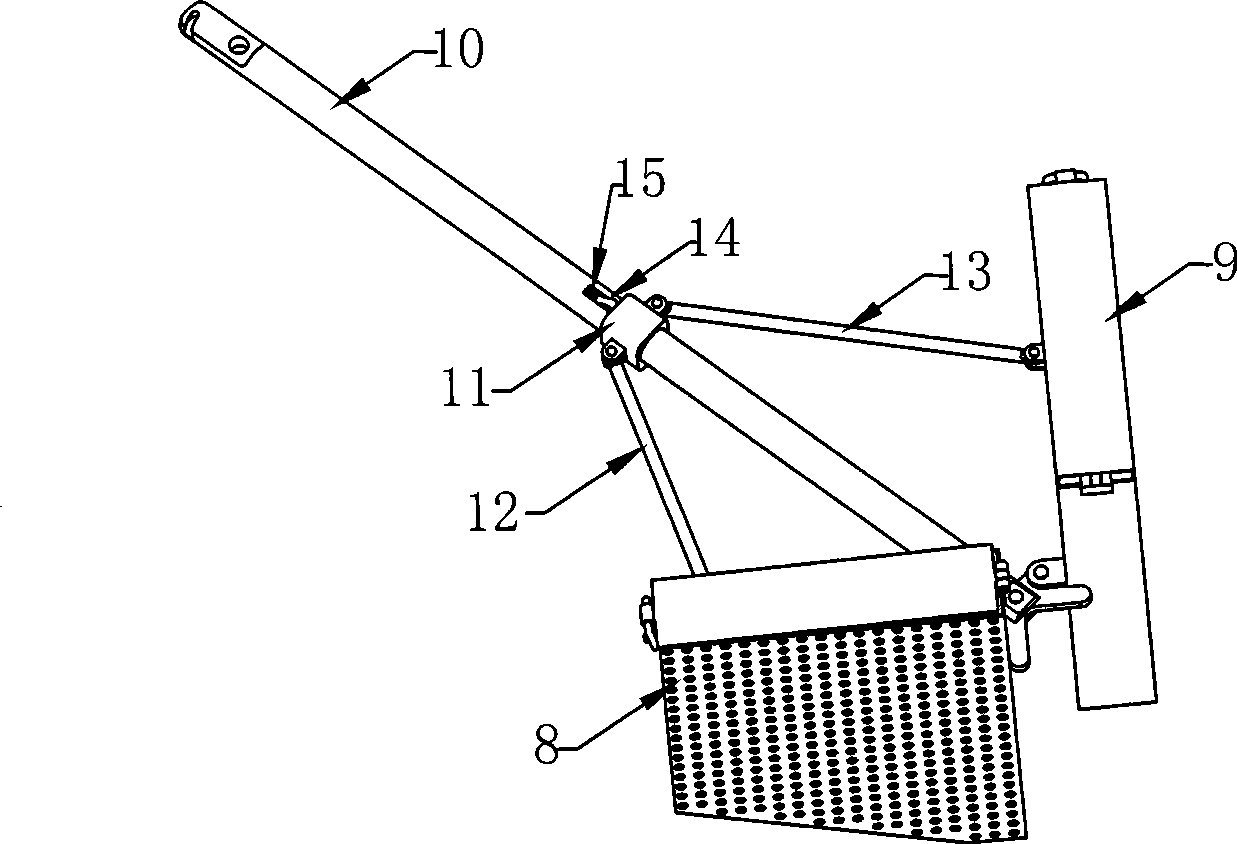Cage for catching lobster at ocean floor
A lobster and cage technology, applied in the field of lobster traps, to achieve the effect of saving space, facilitating transportation, and improving the ability to catch lobsters
- Summary
- Abstract
- Description
- Claims
- Application Information
AI Technical Summary
Problems solved by technology
Method used
Image
Examples
Embodiment Construction
[0018] Such as figure 1 As shown, a submarine lobster trap is composed of a fish net, a cage body 1, a fishy lure box 2, a lobster entrance 3, a pedal 4, and an inclined slide plate 5. The maximum size of the cage body 1 after unfolding is: 2964mm×2960mm×751mm , the fish net is arranged on the periphery of the cage body 1, the fishy lure box 2 is arranged in the cage body 1, the lobster inlet 3 is arranged at the middle part of the four walls of the cage body 1, the pedal 4 is positioned at the lower part of the outside of the lobster inlet 3, and the pedal 4 One end is hingedly connected to the side wall of the cage body 1, and the other end is in contact with the seabed surface. The inwardly inclined slide plate 5 is located inside the lobster inlet 3. Folding interface folded inward; the multiple fishy lure boxes are installed in pairs, and the two fishy lure boxes installed in pairs can be extended or folded together at the same time.
[0019] Such as figure 2 As shown...
PUM
 Login to View More
Login to View More Abstract
Description
Claims
Application Information
 Login to View More
Login to View More - R&D
- Intellectual Property
- Life Sciences
- Materials
- Tech Scout
- Unparalleled Data Quality
- Higher Quality Content
- 60% Fewer Hallucinations
Browse by: Latest US Patents, China's latest patents, Technical Efficacy Thesaurus, Application Domain, Technology Topic, Popular Technical Reports.
© 2025 PatSnap. All rights reserved.Legal|Privacy policy|Modern Slavery Act Transparency Statement|Sitemap|About US| Contact US: help@patsnap.com



